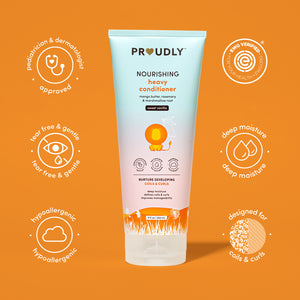This blog post is written by contributing writer Nicky Dawkins, CD, PPD, HHC. Learn more about our advising PROUDLY doula at the end of this article.
Welcome back for another blog, mamas!
When it comes to popping out a tiny human, there are a few places you can give birth: home, hospital, or birthing center. It is the first of many decisions you will make for yourself and your littlest love, and it can be pretty stressful! But don’t worry; I got you!
Each option is unique, with its own set of differences. Let’s start with home birth.
Home birth allows you to stay in the comfort of your own abode, surrounded by familiar sights, sounds, and smells. Plus, you can eat whatever you want (no hospital food for you!) and avoid the sterile atmosphere of a hospital. However, you'd forego the fancy medical equipment and trained professionals that hospitals have.
Hospital birth gives you access to all the bells and whistles of modern medicine, including pain medication and the ability to closely monitor your baby's health. But let's be real, hospitals aren't known for their cozy ambiance.
Birthing centers offer a happy medium, with a more relaxed atmosphere than a hospital and trained professionals who can provide medical care if needed. But you may have to be transferred to a hospital if something doesn’t go according to plan and requires more support.
That said, we want you to choose wisely when it comes to your birth location. And remember: no matter where you give birth, it doesn’t change the type of mother you will be! Do what feels right for you because no matter what, the result is a precious bundle of joy!
I’ve put together a quick list weighing the pros and cons of giving birth at a hospital, home, and birthing center in the United States as a person of visible color.
HOME BIRTH
|
UPSIDES |
DOWNSIDES |
|
A home birth allows for a more personalized and comfortable environment for labor and delivery, with familiar surroundings and loved ones nearby. Home births often involve fewer medical interventions, which can lead to a more natural and empowering birth experience. Women who give birth at home are less likely to experience infections and other complications associated with hospital births. The cost of giving birth at home is generally lower than in the hospital, especially if insurance coverage is limited or unavailable. |
Home births may not be suitable for high-risk pregnancies, as emergency medical care may not be readily available. Midwives and other healthcare providers who attend home births may not have access to the same medical equipment and training as hospital staff. In case of complications during labor and delivery, the transfer to a hospital can be delayed or difficult, putting the mother and baby at risk. There is a risk of medical emergencies during labor and delivery, which may require immediate intervention and specialized medical care. Home birth insurance coverage may be limited or unavailable, and out-of-pocket costs can be high. |
HOSPITAL BIRTH
|
UPSIDES |
DOWNSIDES |
|
Access to a full range of medical interventions and equipment, such as epidurals, cesarean sections, and fetal monitoring. Highly trained medical professionals, including obstetricians, nurses, and anesthesiologists, are available around the clock. The hospital setting provides a sterile and controlled environment for labor and delivery, reducing the risk of infection and other complications. In an emergency, the hospital is equipped to handle high-risk pregnancies and newborn complications. |
Hospitals can feel impersonal and clinical, lacking privacy and personal attention. Interventions may be overused, leading to unnecessary medical procedures and higher costs. Hospitals may have strict policies on labor and delivery, limiting the birth giver’s choices and preferences. There is a risk of medical errors, systematic racism, and malpractice, which can have severe consequences for the mother and baby. The cost of giving birth in a hospital in the United States can be high, even with insurance coverage. There is little support for the postpartum period. |
BIRTHING CENTER
|
UPSIDES |
DOWNSIDES |
|
Birthing centers offer a more homelike and comfortable environment than hospitals, with options for natural childbirth and fewer medical interventions. Those who give birth at a birthing center can often move around more freely, choose their preferred birthing position, and have more control over their birth experience and who is present. Birthing centers are staffed by trained midwives and other healthcare providers who specialize in natural childbirth and can provide personalized care and attention. Maternal health care in birthing centers is often provided by local community health workers who provide more culturally competent care. The cost of giving birth at a birthing center is often lower than in a hospital, and insurance coverage may be available. Postpartum support and basic newborn care are often provided weekly by midwives or birthing centers until six weeks postpartum. |
Birthing centers may not be suitable for high-risk pregnancies or women with certain medical conditions requiring more medical interventions and a hospital setting. If complications arise during labor and delivery, a transfer to a hospital may be necessary, which can delay medical care and put the mother and baby at risk. Birthing centers may not have access to the same level of medical equipment and technology as hospitals, which can limit the options for pain management and medical interventions if needed. The availability of birthing centers may be limited in some areas, making them difficult for some to access. Insurance coverage for birthing center births may be limited or unavailable, and out-of-pocket costs can be high. |
I hope this blog gives you an idea of what to expect from each birth location. Remember, the sooner you start to weigh your options, the more time you will have to find the place that will give you the best chance of having the birth experience you are looking for!
***While this blog occasionally uses the words “mother,” “woman,” or “women,” it is not intended to be exclusionary. We recognize that different categories of people, including cisgender women and transgender men, are able to become pregnant.
About Nicky Dawkins

Nicky Dawkins is a Holistic Reproductive Health Doula and Activist based in Miami, FL. She is the founder of Werk it Moms, a mom-driven organization that focuses on providing educational workshops, community events, and a safe space for mompreneurs and working mothers. In addition to this work, she is the founder of the Menstrual Market and has served as Vice Chair of the Miami Diaper Bank since 2018. She also serves on the board of the No One Births Alone non-profit and others.
Nicky works with birthing people from fertility to postpartum and everything in between. Her passion is to help birthing people have a healthy period, pregnancy, and birth experience with as little intervention as possible. Nicky also works heavily in advocacy within the reproductive health and justice space, focusing primarily on menstrual equity, birth equity, and maternal mental health.
Certifications:
Vaginal Steaming Practitioner - Steamy Chick
Full Spectrum Doula - Mama Glow
Pregnancy & Infant Loss Support Doula - Nneka Hall, PSI
Breastfeeding Counselor - Healthy Start Coalition
Holistic Herbs Practitioner - Grandma’s Hands
Placenta Encapsulation Specialist - Women’s Choice Prenatal
Menstrual Health Coach - Nicole Jardim Fix Your Period
Cannabis Doula Practitioner - The Cannabis Doula and Trichome Institute
Women’s Hormone Health Coach - Menstrual Health Institute
Maternal Mental Health Certification - Postpartum Support International










